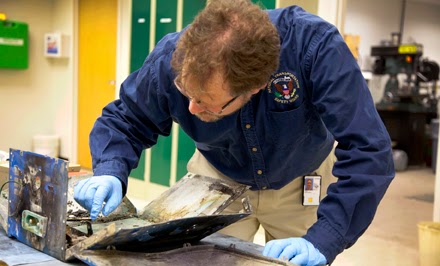 |
| Photo courtesy Boeing |
I believe this to be true about the Boeing 787 Dreamliner:
Designers and engineers at Boeing are hard at work
reworking the plane without its two lithium ion batteries. And, I suspect
with less confidence, they have been doing this for quite some time.
I believe this because this is a company that has built an
empire on brilliance and creativity and surely it must know better than anyone
else that it cannot survive under the barrage of publicity it receives each
time one of its batteries does not perform as expected. And also because it can no longer be
confident that it can tame the wild volatility that is the cobalt oxide lithium
ion battery.
The latest 787 battery event happened on January 14th, when a
Japan Airlines Dreamliner scheduled to depart Narita Airport for Bangkok was taken
out of service after a mechanic noticed white smoke coming from the front
battery. Passengers were transferred to
another plane which arrived in Survanabhumi Bangkok International without problem.
The battery and charger were taken to the headquarters of
GS-YUASA where both the Japanese air safety authorities and the U.S. NationalTransportation Safety Board will participate in an examination.
Reports say the smoke seemed to be
coming from one of the eight cobalt oxide lithium ion cells inside the battery
box and it did not appear that the one cell leaking fluid had caused any
difficulty with the adjacent cells. Japan's Ministry of Land, Infrastructure, Transport and Tourism told Japanese media, "It might not have been so serious as to effect the safety of the plane," according to my man in Tokyo, Takeo Aizawa.
 |
| JAL at Boston. Photo courtesy Patrick Smith |
You may remember that last year at this time both JAL and All Nippon airways experienced problems with their Dreamliner batteries. The entire fleet of 50 787s was grounded for nearly 4 months.
The NTSB characterized the problem on a JAL Dreamliner at Boston Logan
Airport as a thermal runway, meaning an uncontrolled increase in temperature. Several cells were affected and
the damage was widespread and dramatic. What caused the initial problem has not
been determined.
 |
| Damage on the JAL 787 in 2013. Photo courtesy NTSB |
Boeing’s fix included creating more separation between cells,
a suggestion made by Elon Musk - the man behind Tesla Motors, who in the days
following the 787 battery woes last year offered that unsolicited advice from
his perspective as leader of a company that uses the same chemistry to power
its luxury electric cars.
The Boeing solution also included a smoke containment box
which would be a backup just-in-case. Happy with the plan, the FAA and European
authorities let the airplanes fly in April 2013.
That just-in-case smoke containment box was put to use during
the event at Narita on Tuesday and not unexpectedly, Boeing is spinning it as great
proof of concept.
Maybe it is, but it also proves the fears of many materials scientists who believe this battery chemistry is predictably unpredictable and
inadvisable for use in airplanes. It may also be inadvisable on cars, as Mr. Musk may also be learning. (Read more about that, here.)
 |
| Examining the JAL battery in 2013. Photo courtesy NTSB |
It received little attention when the press release went out
last month, but the U.S. Department of Energy recently announced it was open to
receiving proposals for government funding for research into creating low
energy nuclear reactions. One proposed
method involves using the naturally occurring dendrites in lithium oxide. That anyone believes you can create a nuclear reaction in
the substance flying around on airplanes is a stunning piece of news.
If we know anything about aviation safety it is that no
event is unprecedented, there are always warning signs. The challenge
is being alert enough to heed those signs before an event becomes catastrophic.
The batteries on the Dreamliner have given enough signs that
Boeing cannot possibly be ignoring them - given the amount of energy and time it will
take to redesign the plane to accommodate a different energy source.
And that is why when it comes to the Dreamliner I am sure, Boeing must have long ago said, “I love you, now change.”
.JPG)

1 comment:
"It might not have been so serious as to effect the safety of the plane." On the other hand, it might have been. How much are you willing to bet? That's the real issue.
Potential paying passengers aren't going to be willing to bet, and will likely be avoiding the 787 when alternatives are available.
Good luck on redesign.
Post a Comment